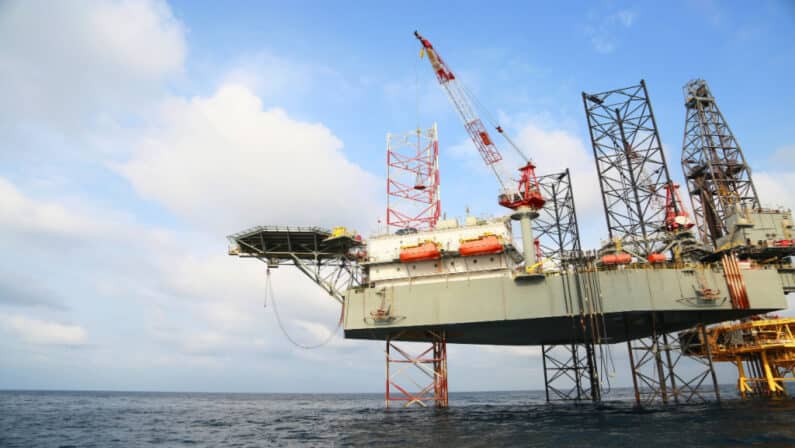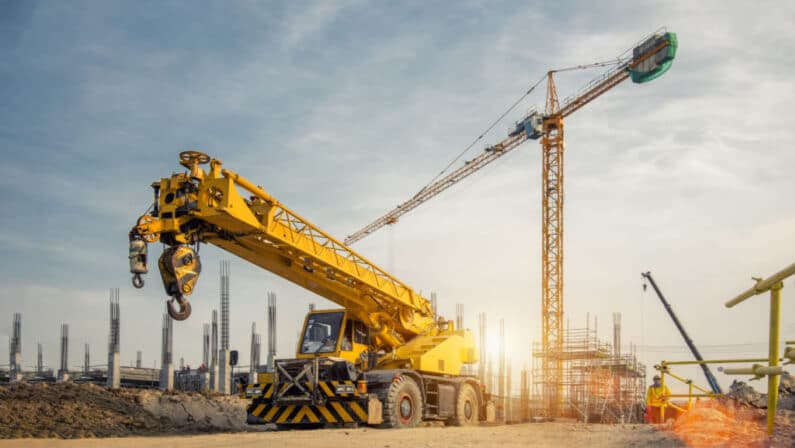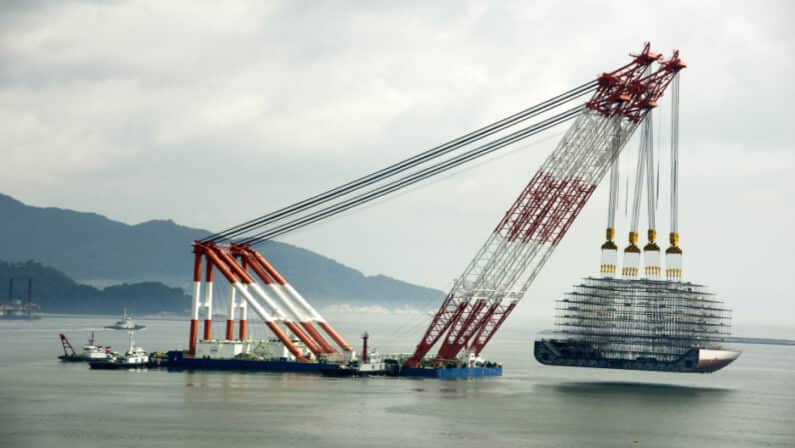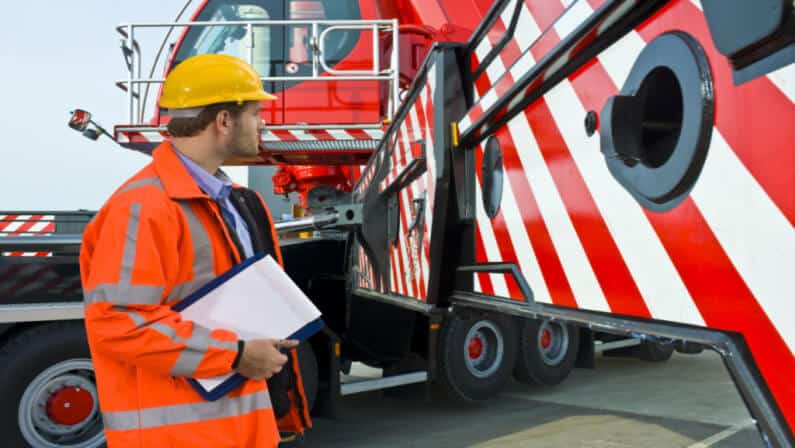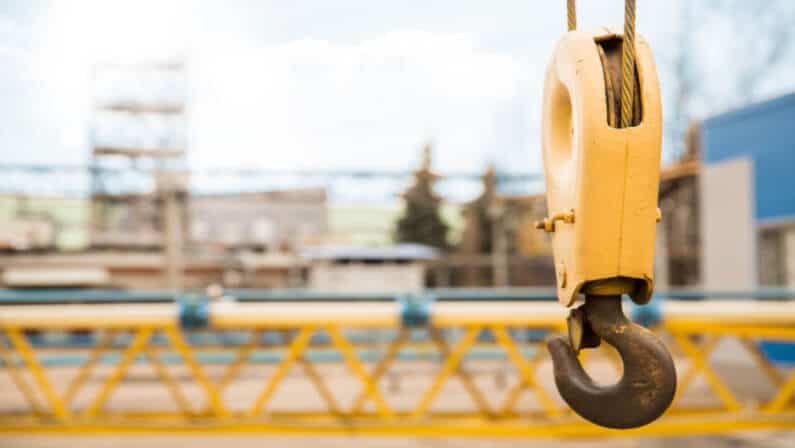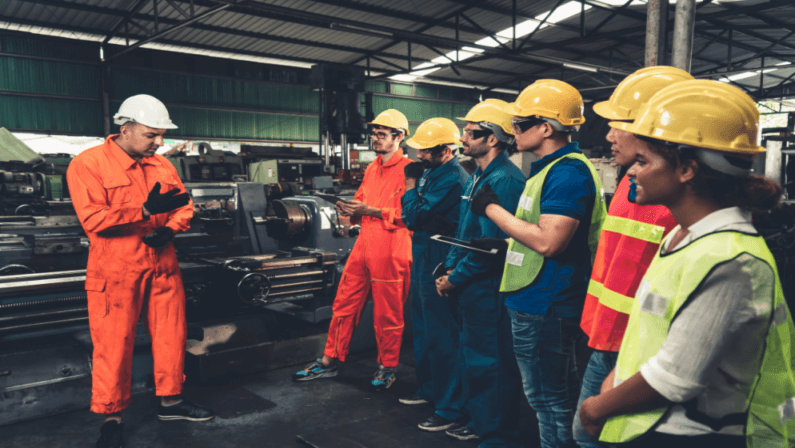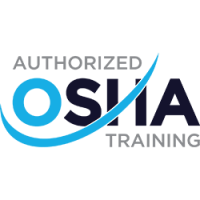The use of a crane in various industries is a common everyday scenario. Crane plays a tremendous job of moving heavy objects that no man can execute. This equipment gets the work done faster and more conveniently.
However, as operating cranes become a usual duty for people on the worksite, proper handling and safety measures are often overlooked. Minor oversight on proper handling may damage property, injury, and even death.
This article will go through everything about using cranes and the preventive measures while dealing with the massive machine.
What Is a Crane?
Cranes are massive machines that transport, lift, and move big and heavy objects to their designated place.
Different industries use these great tools for various reasons—from lifting heavy supplies, transferring goods for shipments, and loading machines for manufacturing.
Cranes are also standard machines for construction and industrial sectors, transporting materials to build vertical structures such as skyscrapers.
The Basic Components of the Crane
A crane has several components. Each part’s functions vary from one another and are crucial to the crane’s smooth performance.
- Boom. A long arm that lifts, moves, and positions a material. Its reach is flexible depending on how it was built.
- Jib. Attached to the end of the boom, the jib is a fixed part that helps move materials and reduces the weight of the main component.
- Rotex Gear. A mechanism that allows the cab and the boom to rotate.
- Counterweights. Counters the weight of the crane by providing stability and preventing tipping.
- Outriggers. Gives additional support by distributing the load and preventing the machine from tipping. This part is often heavier than the maximum weight requirement of the crane. However, note that outriggers only support stable ground.
- Reinforced-Steel Cable. Reinforced steel ropes that do the actual lifting of material.
- Hook. An iron or steel where the material is attached. It has a crane lifting safety latch that prevents the fabric from slipping while in transit.
The History of Cranes
Cranes have a long and rich history that dates back around 3000 BC in Mesopotamia, now the Middle East.
The crane from thousands of years ago was first used for irrigation purposes. Since then, it has evolved into different functions and was developed into the essential and helpful equipment it is today.
The Evolution of the Crane
Crane use started with a simple pulley assisted by a man or an animal for added force. It soon evolved into a manpower treadwheel that allows the lifting of heavier materials.
During the middle age, the crane was developed into a machine that helped load and unloads ships for construction purposes. The material for cranes back then was made of stone towers and wood and was mounted near docks.
Types of Cranes
Cranes have different types developed for various industries. Some cranes are made for land, while others are built for the sea. Although they vary in specific functions, these cranes serve their primary purpose of transporting material from one area to another.
- Floating Crane. A crane specifically built for a ship.
- Telescopic Crane. A crane that has extended tubes and can be adjusted to farther reach. It is usually attached to a vehicle.
- Harbor Crane. A crane is mounted on a fixed platform near a body of water.
- Crawler Crane. Cranes that use tracks for construction sites.
- Railroad Cranes. Crane built for railway repair or construction.
- Aerial Cranes. Cranes are attached to a helicopter to transfer goods in the air.
- Tower Crane. Cranes for building structures are attached to the ground.
Importance of Crane Safety Rules on the Jobsite
Construction crane safety measures are vital in all work sites. Strong enforcement is essential to prevent possible dangers that come with them.
ABC Safety Solutions can conduct crane safety procedures training for your company.
Our training experts will ensure that all crane operators are updated with the latest OSHA guidelines and are well-informed on basic safety measures every time they are on duty. Call us for a free consultation, and we’ll discuss your company requirements.
What are the Most Common Crane Hazards?
The dangers of crane operation lure in workplaces that do not prioritize crane operation safety. It pays to identify these hazards to prepare for a solution once warning signs begin to show.
Damaged or Unstable Ground
Damaged or unstable ground is another potential hazard for crane operation. Over time, the effects of weather, excavation work or other activities can leave voids or sinking spots in the soil that need to be addressed.
It is important to properly stabilise the ground through effective void filling solutions before operating heavy machinery like cranes. Filling sinkholes and voids helps reinforce weak spots that could otherwise lead to dangerous subsidence issues.
Taking steps to ensure the stability of the work area is an important part of maintaining crane operation safety.
Falling Loads
A common peril of working with this machine is falling loads which may result from mechanical failure or slipping of unsecured materials from the hook. Loads that fall into the ground may result in severe injury, fatalities, and damage to property.
Electrical Hazards
Overhead cranes may hit high-voltage power sources, resulting in workers’ electrocution. Crane operators must pre-plan and inspect the site before conducting any activity. Create a crane operation safety checklist as your guide for every operation.
Crane Overload
Overloading the machine can snap off the hook, resulting in the load falling. Too much load can also drag and damage the equipment.
High wind speed, Poor communication, and poor visibility
Strong winds can knock off a crane or the load it is carrying. If high winds go beyond the maximum wind speed notes of the crane, it is better to postpone the activity. Another problem that may arise is poor communication.
Train your workers to use hand signals and radio communication for easier understanding, especially when the environment gets less visible or noisy.
Damage to underground utilities of the earth
The crane’s outrigger may puncture the ground and hit sewage, water pipes, and underground electric lines. It may also cause gas line explosions, which are highly hazardous for workers and the people within the vicinity.
Crane Safety Tips
Cranes are essential equipment for progress. But they can also destroy if it is in the hands of untrained personnel.
These overhead crane safety tips can help you secure the crane’s optimum performance and your worker’s safety at all times.
Use a certified operator
Your operator must be trained well before handling such a large machine. There are certifications for crane operators that you can require to ensure that only experts hold equipment gear.
Inspect, inspect and inspect
Aside from the crane’s annual inspection, a dedicated mechanic should take charge of monitoring its performance each day. Before the start of any operation, a thorough inspection is highly recommended to examine the components.
Know what’s below
The crane must stand on stable ground. Before operating the machine, study the soil or the concrete where it stands. Make the necessary adjustments to fit in the type of ground the equipment is standing on to avoid slipping loads and tipping the crane.
Select appropriate PPE
Every personnel on the worksite should wear proper personal protective equipment (PPE) that includes hard hats, eye protection, hand protection, and full body gear.
Ensure clear warning signals are displayed on-site when needed
Hazard signs must always be visible on the site. The danger zone should have clear warning signs and sound alarms to keep each worker on high alert.
Ensure a supervisor is present on-site at all times when cranes are in operation
The crane supervisor plays an important role in crewing the operation. The responsibility of the supervisor covers proper handling of the equipment by the workers, checking the vicinity of potential hazards, and finding solutions to maintain safety in the workplace.
Plan for swing
Determining the swing radius helps in mitigating potential danger within the work site. The radius needs a barricade, and no worker without proper PPE should access the area. The swing should also be practiced without load to check whether it may hit power lines and other equipment within the site.
Use cranes properly
Workers should be able to use the cranes correctly by using the right gear for the right load. Never skip protocols that come with using the crane and neglect necessary measures to maintain its proper function. Misuse of components and crane gear will result in malfunctions and sudden errors.
Stay in touch
Always communicate with all workers involved, especially during the lifting process. Use two-way radios and hand signals during the movement and stay focused on the operation.
Pay attention
During maintenance and regular check-ups of the machine, a mechanic should always spot anything unusual for every component, which may lead to bigger problems if left unresolved.
Crane operators must also report even the slightest change in the crane’s performance.
Avoid man baskets
Using of man baskets should be carefully planned before letting workers ride in them. In some cases, it is highly discouraged.
A crane operator must know how to assess what kind of component to use to assist the basket and to avoid it from falling while carrying workers inside it.
Don’t use cranes for storage
Never use a crane to store materials. All materials should be unloaded from the hook and must not be left unattended. If materials remain in the crane, there is an impending danger of it falling and hitting a person below.
Start with a plan.
A successful crane operation safety program starts with a concrete plan. All involved should contribute to executing this plan to limit the dangers of crane operation. Moreover, ensure that medical services are available at all sites if an injury occurs.
What should you do before leaving the crane?
After completing the day’s activity, crane operators must follow these crane operator safety tips before leaving the equipment.
This ensures that the machine was checked correctly for the following user and will reduce the hazards:
- Remove all loads left hanging on the hooks
- Raise all hooks
- Move the crane to its safe location/parking
- Ensure all controllers are in “off” mode before turning off the main switch.
Get a crane operation safety training course
Crane safety is a must and should never be neglected. Proper training for all workers involved is essential to maintain a safe workplace. Exercise can also reduce cases of injuries, possess properties, and save lives.
ABC Safety Solutions can conduct the best course for your company if you are looking for a training provider to help your team with crane operation safety.
From training for proper wearing of PPE and basic crane operation protocols to appropriate handling of components, our training providers will ensure that all workers get the learning outcomes we set.
Call us today to get started with a crane operating safety training course.

